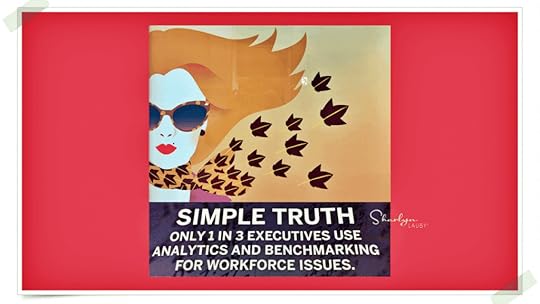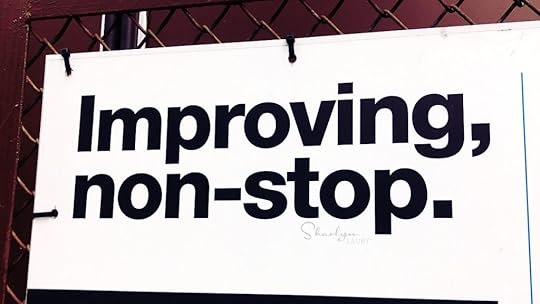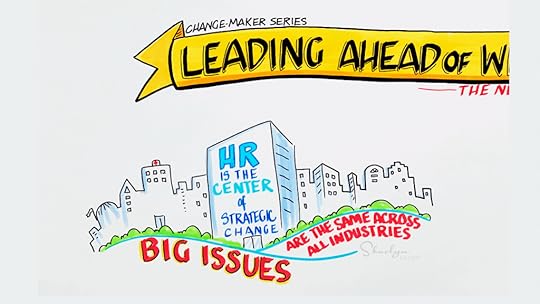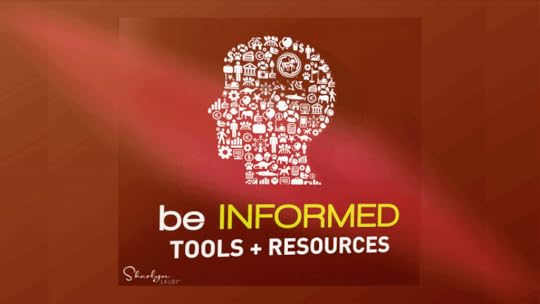Sharlyn J. Lauby's Blog, page 2
October 30, 2025
Bookmark This! The HR Technology Edition

Estimated reading time: 3 minutes
I saw this article a couple of months ago about how organizations are merging their human resources and technology departments. It’s an interesting read worth checking out. I’m sure there will be people who will feel that merging HR and technology isn’t good for the profession, very similar to a recent conversation about HR reporting to the CFO.
But the article reminded me of my start in human resources. Not only did HR report to the CFO, but part of my role was to work with the technology department in developing and maintaining the company’s HRIS (human resources information system). The organization had built their own HRIS, and users would contact me if they had suggestions for improving the system. I would put together those suggestions and pitch them to the technology department.
Then, the technology department would develop the new features and ask me to test them out. It was great fun trying to “break” what the technology team had put together. And I mean that in the nicest way possible. It was my job to find the weaknesses. Once the system was tested, we would write instructions and send it out to users.
Looking back on the experience, I think working with technology so early in my career gave me an appreciation for what technology could do. I learned what to look for in technology demos. It also helped me learn how to ask good questions. I’d like to think it helped the technology team as well to understand directly from users what was important to them.
Here are a few articles that speak to the connection between human resources and technology.
HR Professionals Play a Key Role in Technology Strategy
I know there’s a lot of talk about keeping the “human” in human resources. Knowing technology isn’t about removing the human part. Knowing technology is about creating a work environment where technology does what it does best. That way, the rest of our time is spent focusing on the human part.
Your Technology Strategy Needs to Include Building the Perfect Tech Stack
Organizations need to have strategies. Common ones include a business strategy, workforce strategy, and a technology strategy. To me, a technology strategy is the plan that outlines how technology will help the organization – and the employees working in it – accomplish their goals.
Jakub Ficner on Managing Ethical Risk with Technology
In this episode of The HR Bartender Show, Case IQ’s Jakub Ficner talks about the relationship between HR, ethics, and technology. What technology does well is collect data. And that’s where we can use technology to reduce ethical risk. Organizations can examine their ethics complaints and investigations to look for trends. And understanding those trends allows the organization to take steps to reduce risk.
Use Technology to Improve Performance Gaps
Using technology to improve performance does mean that organizations need to set performance expectations, provide employees with the proper training and tools, and coach employees along the way. Organizations want high performing employees and teams. Give people what they need to be successful.
I’ve said before that human resources is the architect of work. Well, creating the future of work includes technology. And HR pros play a key role in developing the strategy. Maybe some of the changes we’re reading about like merging HR and technology are designed to break down organizational silos and encourage more collaboration.
Image captured by Sharlyn Lauby at the HR Technology Conference in Las Vegas, NV
The post Bookmark This! The HR Technology Edition appeared first on hr bartender.
October 19, 2025
10 Career Tips for First Time Supervisors

Estimated reading time: 4 minutes
Making the transition to supervisor can be one of the most rewarding and challenging times in a person’s career. It’s rewarding because you’re moving along in your career goals. And it’s challenging because being a supervisor is more responsibility. So today I wanted to put together some career tips that I wish someone would have told me when I first became a supervisor. Here’s the list:
Don’t try to be everyone’s friend. This doesn’t mean you shouldn’t be friendly. There’s a difference. But it’s not realistic to think that you can be everyone’s friend, especially if at some point you need to discipline an employee or deliver “bad news”. This is particularly true if you’ve moved up in the organization and are supervising recent coworkers.Take every opportunity to improve your people skills. No matter how long you’re in the business world, never turn down training and development. You can even learn something from bad training. Learn how to say “no” comfortably. The answer to everything is not “yes”. Being able to say “no” when necessary will allow you to focus on your wellbeing. Ask for feedback and input. You don’t have to know everything. Often, we put additional pressure on ourselves by assuming (incorrectly) that being a supervisor means we need to have all the answers. Being a supervisor means we should be able to find all the answers.Understand how you manage change. Business is all about change. No sooner do we get into our flow with a project or process and it changes. Get used to it. Become self-aware about how you personally process change and what resources you need to manage change successfully. Being flexible and agile is critical.Remember that fair and equal are not the same thing. Employees want to be treated fairly. It’s possible to be fair and not give everyone the same thing. Recognition is a good example. Everyone enjoys being recognized but all people do not want to be recognized the same way.Know how to run an effective meeting. People complain about meetings all the time. Developing a reputation for leading a good meeting will do wonders for your career – because people will attend your meetings and participate at a high level. This leads to productive conversations, good decisions, and measurable results.Master the art of delegation. Remember #2? You do not have to do everything yourself. You are responsible for making sure the task is completed – on time, within budget, and to the company standard. But you don’t have to do it all yourself.Find someone you can trust (and vent to) about work. Sometimes as a supervisor, you will have access to confidential information. And you’ll hear things that can be frustrating. Supervisors can’t always share everything with everyone. Find a person who you can talk with. It could be HR, someone at home, or a colleague. Just make sure you can trust that the person will handle the conversation appropriately.Find time to relax. Let’s be realistic – most times becoming a supervisor includes extra work. We must be able to effectively manage our workload without negatively impacting our wellbeing. The team relies upon us to be healthy and energetic.Becoming a supervisor is about developing your team. When the team can effectively do the work, then you can attend training, take a vacation, or go to a meeting and the department doesn’t fall apart. That’s the work of a supervisor. This doesn’t mean that supervisors are abdicating their responsibilities. Their role is to develop people and support them. And make no mistake, that’s a big job.
Image captured by Sharlyn Lauby while exploring the streets of Las Vegas, NV
The post 10 Career Tips for First Time Supervisors appeared first on hr bartender.
October 16, 2025
Use Goals, Objectives, and Outcomes for Better Business Results

Estimated reading time: 3 minutes
For many organizations, it’s planning and budget season. It’s the time of year when we’re thinking about what we want to accomplish in the year ahead. That’s great. We need to have those conversations.
One of the things that could be helpful during the planning process is remembering the definitions of goals, objectives, and outcomes. At first glance, there might not be anything wrong with using the words as synonyms. They’re all focused on achievement, right? Not a big deal. But then again, maybe it’s worth taking a moment to differentiate them to bring clarity to budgeting conversations. Here are the definitions of each with an example:
Goals are an observable and measurable end result having one or more objectives to be achieved. Goals are typically broad in scope. For example, an organization might have a goal to “increase profits”. Or an individual might have a goal to “become certified”.
Objectives are a specific result you’re trying to achieve within a time frame and with available resources. They’re considered more specific and easier to measure than a goal. One way to think of objectives is these are the steps you will take to achieve the goal. Using the examples from above, an organization’s objective might be to “call all existing customers during Q3 with a special promotion to increase sales.”. For an individual, the objective might be to “research all relevant HR certifications and register to take the exam before the end of the year.”
Outcomes are the measurement and evaluation of an activity’s results against their intended or projected results. Outcomes are what you hope to achieve when you accomplish the goal. Again, using the above examples, the organization’s outcome might be to “increase profit by 50% over last quarter”. That’s what the company is trying to do. For an individual, the outcome could be to “get a pay increase” or “get a new job” as a result of earning a certification.
Organizations might be able to create more relevant goals if they focus on outcomes first. For instance, what are the business outcomes for HR? And how are they using those outcomes to create goals?
The same questions apply to employes. Managers spend a lot of time talking with employees about goals. And that’s good. But do managers spend time talking with employees about outcomes? Do employees know how their goals not only align with the organization’s goals BUT also with business outcomes? A key principle of employee engagement is that employees need to see the how their work has value. When managers are talking with employees about value, are they framing it in the context of the organization’s outcomes? Something to consider.
Every organization is different so I don’t know that I can completely answer these questions for each organization. But I do believe the questions are worth asking. Regardless of the employment rate, today’s talent landscape is very competitive and that means HR departments will be asked to deliver at higher levels. The way to create a high performing HR function is by focusing on business outcomes.
Image captured by Sharlyn Lauby while exploring the streets of Manhattan, NY
The post Use Goals, Objectives, and Outcomes for Better Business Results appeared first on hr bartender.
October 14, 2025
Employee Referral Programs: 5 Ways to Keep Your Program Relevant

Estimated reading time: 3 minutes
Employee referral programs are consistently listed as an effective source of hire. One of the reasons they work so well is because the candidate already has some knowledge of the organization. The employee who referred them has probably told them about the organization’s strengths … as well as things they need to improve on. And the person applied knowing that information.
But employee referral programs can get stale. So here are some things to consider if the organization would like to get better results.
Know your cost per hire. If you haven’t calculated cost per hire lately, now might be a good time to know how much it costs to bring someone into the organization. According to this article from Paychex, the average cost per hire for a position at an accounting firm is $5000. Keep the cost per hire number in mind when deciding on the amount of the employee referral bonus. Honestly, if the company offers $50, well, that might be too low for employees to take the program seriously. Be flexible with referral bonuses. If an organization says, “Hey, we aren’t in a position to pay out thousands per referral.”, consider getting creative. Maybe offer some money and time off. Possibly consider giving employees a choice. There’s no rule that employee referral bonuses must be all money. Expand who is eligible to receive a referral. At the beginning of today’s article, I mentioned one of the reasons that employee referral programs work. Well, current employees aren’t the only people who know the strengths and weaknesses of the organization. Former employees, contractors, and sometimes even customers can all refer great candidates. Offer specials based on hiring needs. Employee referral programs can be tweaked to fit surges in hiring. Let’s say a retail company needs to hire hundreds for holiday shopping season, they might want to offer a special referral bonus for seasonal hires. I’ve also seen this type of special offer when an organization is opening a new location.Be timely with payouts. Typically, the employee who is referring someone does not play a role in the hiring process. Nor do they have a say in whether the candidate gets hired. They also don’t supervise the candidate. So, asking an employee to wait months for a referral bonus might not align with the purpose of the program. They don’t really have a part in whether the new hire stays. Maybe the accountability for hiring, training, engaging, and managing the new hire needs to fall with the managerand not the person who made the referral. Something to consider.Employee referral programs can be a great source of hire. Obviously, they shouldn’t be an organization’s only source. But they can be a great one. For the program to work well, the program should be well defined and managed.
Consider who can be eligible for a referral.Align referral bonuses with cost per hire. Get creative with rewards.Offer special bonuses during peak hiring times.Think about when payouts should happen.The nice thing about employee referral programs is that they’re flexible. Organizations can offer special promotions based on hiring needs. Use this flexibility to benefit the company’s recruiting plan.
Image captured by Sharlyn Lauby while exploring the streets of Salt Lake City, UT
The post Employee Referral Programs: 5 Ways to Keep Your Program Relevant appeared first on hr bartender.
October 9, 2025
Direct Primary Care: What HR Needs to Know

Estimated reading time: 6 minutes
A couple of weeks ago, I published an article about H.R. 1, also known as the One Big Beautiful Bill (OBBB). The article talked about how the OBBB will impact employee benefits. If you haven’t checked it out, I hope you will.
One aspect of employee benefits getting a lot of attention (because of the OBBB) is direct primary care (DPC). I must admit that I don’t know a lot of details about DPC, so I asked our friend Cory Jorbin, Esq., national director of compliance consulting at Hub International, if he would share his knowledge with us. And thankfully, he said yes. In his role, Cory consults with employers of all sizes to design, implement and ensure the compliance of employee benefit plans. He holds a Juris Doctorate from Cleveland State University and is a licensed attorney in the State of Illinois and admitted to practice before the U.S. Tax Court.
A quick reminder that Cory comments shouldn’t be construed as legal advice or as pertaining to any specific factual situations. If you have detailed employee benefit questions, they should be addressed directly with your friendly neighborhood benefits broker or labor and employment attorney.
Cory, thanks for being here. When we spoke last about the OBBB and employee benefits changes, you mentioned direct primary care (DPC). Let’s elaborate on it today. What is direct primary care and how does it work?
[Jorbin] Direct Primary Care (DPC) is a primary care delivery model where a provider or network of providers provide primary care services to members at a fixed periodic fee. The providers do not bill the health plan for office visits. This model is similar to a gym membership, where in exchange for a fixed fee, members can use the gym as much or as little as they need. Regardless of the number of visits, the fee remains the same.
What are the advantages of DPC for employer sponsored benefit plans? Are there any downsides to consider?
[Jorbin] For employer sponsored benefit plans there are several advantages.
All, or at least some (depending on whether DPC is mandatory or optional) primary care claims become fixed costs rather than variable based on claims.DPC may provide a higher level of service than traditional primary care as there is less focus on billing health plans. This could lead to improved health outcomes for plan participants, especially those with chronic conditions requiring frequent primary care visits. Removal of cost as a barrier to receiving care. Since the DPC model is based on a fixed fee, plan participants who may otherwise put off receiving primary care due to cost would no longer have this barrier.Here are potential downsides to consider as well.
If the employer requires use of the DPC there will be disruption for plan participants who will have to change primary care providers, which they may not like.While fixed fees may be preferrable for the employer, they may potentially be greater than the variable fees associated with primary care claims under a traditional model. Employer plans may be able to obtain less data from DPC providers than they are from carriers and third-party administrators (TPAs). This will vary by DPC provider and highlights the importance of considering the availability of data by DPC provider.A healthcare model that’s also getting more attention these days is concierge coverage. Can you explain what concierge coverage is and why it’s different from DPC?

[Jorbin] The main difference between DPC and concierge medicine is that DPC under the One Big Beautiful Bill Act has a statutory definition, while there is no such definition attached to concierge medicine. This means there is no consistency in what constitutes concierge medicine across different types of providers.
Some providers using the concierge label have guaranteed access to same-day appointments, or longer standard appointment times. Some providers offer enhanced access to their teams via apps, text messaging, or telehealth visits. Other providers may even come to the home or office of the member. Notably, unless specifically indicated by the concierge provider, it should be expected that concierge providers will still bill the health plan when they provide medical services.
How can an employer determine if a DPC is a good fit for their organization?
[Jorbin] Employers should start with understanding their populations and the availability of DPC where they have employees. The DPC market is very fragmented as it is still relatively new. This means if an employer has employees in two different states, there may not be a single DPC that has locations in both states. Even within a single state, employees may not have access to a single DPC provider throughout that state. This means the employer must choose between potentially offering different DPC providers based on location or including DPC as part of their plan in one location, but not others.

Next, employers should understand their current primary health claims. Are these significant? Are these growing? Do they have many employees with chronic conditions such as diabetes, or hypertension with frequent primary care visits? Do employees see cost as a barrier to obtaining primary care services? All of these are important questions to ask and may point to implementing DPC.
These considerations will help the employer further evaluate whether DPC is a good fit for their plans.
Last question. Many organizations are entering what I call “open enrollment season”. Is adding a DPC component something that’s relatively easy to do?
[Jorbin] Adding DPC to an employer sponsored plan can be relatively simple. That being said, communication is very important since employees may not be familiar with DPC. This is especially important if the employer is considering a mandatory DPC model. Employees will need to understand what the DPC is, how to access it, and any limitations of the DPC. Ultimately, effective communication can help make the rollout of the DPC successful.
Employers will also need to work with their carriers or TPAs to determine what type of integration or data feeds are needed between the DPC and the carrier/TPA. Since DPCs can vary significantly in their experience of working with employer sponsored plans, carrier and TPAs, this integration needs to be considered as part of the vetting process.
I want to thank Cory for taking the time to share with us a little more about the components of direct primary care. If you want to learn more about the OBBB Act and its impact on employee benefits, check out Hub International’s webinar on the subject.
The good news is that employee benefit options are expanding. That could be great for both organizations and individuals. But employee benefits remain complex. So doing the research to find out the best options for your workforce is still absolutely necessary. Don’t rule out using subject matter experts like benefits brokers and lawyers to get the information you need.
Image captured by Sharlyn Lauby while exploring the streets of Los Angeles, CA
The post Direct Primary Care: What HR Needs to Know appeared first on hr bartender.
October 7, 2025
The Current Employment Law Landscape

Estimated reading time: 2 minutes
I recently shared with you and article about how the One Big Beautiful Bill (OBBB) impacts employee benefits. If you haven’t checked it out, I hope you will. As human resources professionals, we are seeing a lot of change and it’s necessary for us to stay on top of what’s going on. Our organizations look to us for this information for compliance and productivity.
Which is why I wanted to share with you a webinar from our friends at Foley & Lardner LLP titled “From the White House to the Workplace: Employment Law in the Second Trump Era”. (Side note: If you’re certified, the webinar could be eligible for recertification credit.) I’m not going to try to recap everything the presenters covered but they did touch on several important topics, including:
Immigration, including H-1B VisasWage & Hour, including Minimum Salary Thresholds and Overtime CompensationNoncompete AgreementsDiversity, Equity, and Inclusion (DEI) and Religious AccommodationNational Labor Relations Board (NLRB)Plus! The presenters talked a little about the current government shutdown and its impact on employers. So the information is very timely.
I listened to the recording and one of the things I liked about the webinar was that the presenters gave us a quick timeline – meaning they reminded us where things were prior to this administration and what’s happened since. I know that might sound like a small detail but for some of us, there might be employment laws we deal with all the time and know those laws and court rulings really well. And then there are laws we don’t deal with regularly so it was nice to get a refresher.
The presenters also highlighted where employers might have some questions about recent rulings and executive orders. These rulings and executive orders are new. Some of them are being challenged in the courts. Organizations are going to be looking for answers and being able to ask good questions will be important.
Now more than ever, human resources professionals need to find good reliable sources of employment law information.
Image captured by Sharlyn Lauby at the HR Technology Conference in Las Vegas, NV
The post The Current Employment Law Landscape appeared first on hr bartender.
October 5, 2025
Human Resources: Where Should it Report on the Organizational Chart

Estimated reading time: 3 minutes
I’ve noticed some chatter on LinkedIn lately about human resources and the organizational chart. Specifically, whether HR should report to the CEO or CFO. Most of the conversation was focused on how HR should never report to the CFO.
I get it. The CFO is focused on money, as they should be. And if HR reports to the CFO, it might send the message that HR isn’t focused on employees and engagement … they’re focused on money. We do need to keep in mind that HR does have more than a little obligation to be fiscally conscious. By contrast, if HR reports to the CEO, it sends the message that HR is more balanced.
I’ve reported to both CEOs and CFOs in my career. In my first HR job, HR reported to the CFO. While he was focused on the money, he was also focused on people. Because he understood that it takes people to make money. I’ve also worked for CEOs that were not balanced and totally focused on making the numbers to the exclusion of employee needs. In my experience, it wasn’t about the job title that HR reported to. It was about the person and their philosophies about employee recruiting, engagement, and retention.
This scenario is also true for other departments, like technology. In some organizations, IT reports to the CFO and in others they are a stand-alone department. Bottom-line: the reporting structure of the company says a lot about organizational priorities.
That being said, HR (or any other department) can’t bounce around on the organizational chart based on who holds the role of CEO or CFO. It does mean that the individuals in the department need to evaluate if they can be in alignment with the organization based on where they fall on the organizational chart. I realize this will be a controversial opinion, but it’s possible that HR reporting to the right CFO could be a good thing for HR and the workforce. On the other hand, reporting to the wrong CEO could result in all the wrong things.
This should not be a surprise to anyone.
While HR might not have complete control over where they report on the organizational chart, they do have some control over things like:
Setting HR goals that align with organizational strategyTracking metrics and analytics to identify and solve talent related problemsMonitoring expenditures and looking for low-cost ways to have a big impactYou see my point. Regardless of where HR is on the organizational chart, HR departments have the opportunity to track the numbers, follow good business decisions, and make an impact. The question becomes, what is HR doing to ensure they are knowledgeable and capable of talking the same language as the CEO and CFO?
Image captured by Sharlyn Lauby while exploring the streets of Las Vegas, NV
The post Human Resources: Where Should it Report on the Organizational Chart appeared first on hr bartender.
October 2, 2025
Bookmark This! The Business Meetings Edition

Estimated reading time: 3 minutes
I know we’re all aware of this, but we spend a lot of our work time in meetings. I don’t know the exact number of hours. I’ve seen statistics ranging from 3 hours a week all the way up to 23 hours a week. Regardless, it’s a lot.
Which is why organizations should make conducting effective and efficient meetings a business priority. Poorly run meetings decrease productivity and no one wants that.
It might sound counterintuitive, but one of the ways to reinforce having good meetings could be to have a meeting about meetings. Remind meeting leaders that running a good meeting is a skill that needs continuous attention.
If you’re looking for some resources on leading a good meeting, here are a few articles to get you started.
There Are Only 3 Reasons to Hold Business Meetings
We’re not going to eliminate business meetings. But that doesn’t mean we have to attend bad ones. One of the best skills to have as a working professional is the ability to run a good business meeting. Employees who have this skill will be able to gather groups and engage their talents. The first step is knowing when to call the meeting.
8 Tips for More Productive Meetings
Sometimes the phrase “let’s meet about this” sounds so casual that it might send the message that meetings are easy. Truth be told, meetings are hard work. At least when they’re done right. The good thing about these tips is that they can be applied to both in-person and virtual meetings. Creating meeting consistency is good for business.
Meeting Leaders Don’t Have to Do It All
Meeting leaders need to remember that there is no rule that says they need to do everything. Ask others to get involved. Before the next meeting, go to a couple of participants and ask, “Would you mind keeping our parking lot at the next meeting?” Participants come to the meeting prepared – for the agenda and their role.
Business meetings aren’t going away so we need to make them better. Meeting leaders need to call meetings for the right reasons and conduct good sessions. Participants need to show up and participate at a high level.
Oh, and I would be terribly remiss if I didn’t mention that I wrote a book a few years ago totally dedicated to this topic. It’s titled “Essential Meeting Blueprints for Managers” and it’s a resource focused solely on leading a good meeting. I hope you’ll check it out.
Meetings are an important part of business. The information discussed during meetings helps us do our jobs better, which ultimately helps the organization perform better. I know we like to joke about meetings, but we can’t let that keep us from trying to improve them.
The post Bookmark This! The Business Meetings Edition appeared first on hr bartender.
September 30, 2025
5 Steps for Creating a Knowledge Management Strategy Today

Estimated reading time: 3 minutes
The business world is constantly changing. That’s not necessarily a bad thing. Not only do organizations and employees need to change along with it, but it can be helpful to remember the way things used to be. The good news is that we don’t have to remember all the information in our heads. Organizations can create knowledge management (KM) systems to store information for when we need to use it.
According to IBM, knowledge management is the process of identifying, organizing, storing, and disseminating information within an organization. The reason KM is important is because when information is not available or not easily accessible, it can be expensive (in terms of productivity) because employees are spending a lot of time trying to find it. IBM identified three types of information (aka knowledge) that most organizations are trying to maintain: tacit, explicit, and implicit.
Tacit knowledge is typically acquired through experience, and it is intuitively understood. An example of tacit knowledge might be the best practices of the organization’s top salesperson. Obviously, everyone would benefit from this information but because tacit knowledge comes from experience, it can be challenging to articulate and transfer to other individuals.
Explicit knowledge is captured within various document types such as manuals, reports, and guides. It’s probably the most well-known form of knowledge and intellectual capital within an organization. Examples of explicit knowledge include the employee handbook, the organization’s standard operating procedures, and even financial reports. Companies often use explicit knowledge to successfully facilitate knowledge transfer to new employees during onboarding.
Implicit knowledge might also be referred to as “know how”. For instance, the organization might ask every salesperson to prepare a weekly report. How each salesperson generates their weekly report is implicit knowledge. It’s the application of explicit knowledge. Implicit knowledge isn’t necessarily difficult to organize or share, but often organizations just simply haven’t done it.
Let’s get back to my opening comment about knowledge management being expensive when employees can’t find information. To make information easier to locate, organizations should create a knowledge management strategy. In this strategy, organizations need to:
Define the types of knowledge that exist across the organization and prioritize those types of knowledge that are critical to the operation.Reach consensus on how the organization will collect knowledge from key stakeholders and subject matter experts (SMEs).Create a process for reviewing knowledge to maintain its accuracy and relevance.Designate a central location for knowledge to reside, ensuring that it is safe from manipulation. This could be a technology solution. Communicate and encourage knowledge sharing throughout the organization.KM systems allow the organization to maintain information critical to the organization’s success. Especially when an employee is transitioning to a new role. Sometimes KM is often an afterthought. The good news is when an employee is transitioning to a new department or location, they can pick up the phone and ask a few questions. But when the employee transitioning out of the organization, it’s not as easy.
And frankly, when employees transition, they should be able to focus on their new role – versus spending much of their time on their old one. A knowledge management strategy should have a greater priority within organizations. It allows the organization to feel confident they have the knowledge they need for ongoing success.
Image captured by Sharlyn Lauby at the HR Technology Conference in Las Vegas, NV
The post 5 Steps for Creating a Knowledge Management Strategy Today appeared first on hr bartender.
September 28, 2025
3 Artificial Intelligence Learning Activities for the Workplace

Estimated reading time: 4 minutes
I saw a headline on CNBC recently saying that “Google execs say employees have to ‘be more AI-savvy’ as competition ramps up”. I agree that there’s a lot of competition in the artificial intelligence (AI) space. And I agree that employees at every level of the organization need to learn more about AI. The question becomes what’s the best way to help employees become “AI-savvy”? It starts with learning.
Remember that with anything new, employees will have to unlearn certain things and relearn something else. Artificial intelligence is no exception. This learning curve will take time. It also means being intentional in the order that employees should learn. Artificial intelligence is growing and changing rapidly. As such, organizations – and employees – will want to find ways to stay in learner mode.
I attended an artificial intelligence conference earlier this year hosted by the University of Florida. One of the speakers compared artificial intelligence learning to a construction scaffold. Organizations should build a foundation and then make plans to add to it. If you don’t like the scaffold analogy, think of it like building your favorite burger. You want to layer the ingredients in a way that it doesn’t fall apart with the first bite.
So, as your organization is planning to increase their use of AI, here are some activities that can help employees learn and get more comfortable using AI.
One of the first places to start is making sure employees know how to learn prompts, meaning how to ask AI a question. Think of this like learning how to conduct a search on the internet. At one time, Boolean search was a good skill to have. It took practice to learn the right search sequence. The same could be said for AI. (Side note: I’m not here to debate the relevance of Boolean search. There is some conversation on the internet that it’s not as necessary as it used to be. And that search engines don’t recognize it the way they used to.)
Next, AI is not a substitute for subject matter expertise. It’s possible that AI might not be aware of certain aspects of history or breaking news. But AI tools could be perfect for summarizing information. Maybe we can give ai a bunch of articles and ask it to summarize the information. I’ve worked with plenty of people that if you gave them a handful of pages on a topic, they would never read them. But a one-page summary? Yes, they would. This could be very handy going into operational planning and budget season.
Managers play a big role in employee learning. Organizations should include AI in the organization’s leadership and management development programs. Do managers know how to use AI? Do they know how to encourage and support the use of AI in their teams? This can’t become one of those ‘do as I say not as I do’ moments. Managers should learn how to use Ai so they can share with employees their experience.
If organizations want employees to be more “AI-savvy” then they need to 1) teach employees how to use the right prompts, 2) use AI for small activities like summarizing information, and 3) ensure that managers are supporting the use of AI tools. This is the foundation for building future AI-related learning activities.

Let me wrap up today’s article with a funny little story about AI learning. Regular readers of HR Bartender know I play Pokémon Go. Well, one of the online Pokémon groups that I belong to started this cute thread with people posting a realistic version of their avatar with their favorite Pokémon buddy. So, I decided I wanted to see what mine would look like. But I didn’t really know how to ask the question. I asked AI to tell me how to ask them to create this image. And they did. Yep, that’s where we are. AI told me how to ask AI.
I’m not sharing this story so you can ask AI to make cute Pokémon images. But it does speak to how fast AI is developing and the need to learn more about it. Keep doing AI experiments and learning.
Image captured by Sharlyn Lauby while exploring the streets of Atlanta, GA
The post 3 Artificial Intelligence Learning Activities for the Workplace appeared first on hr bartender.
Sharlyn J. Lauby's Blog
- Sharlyn J. Lauby's profile
- 10 followers



